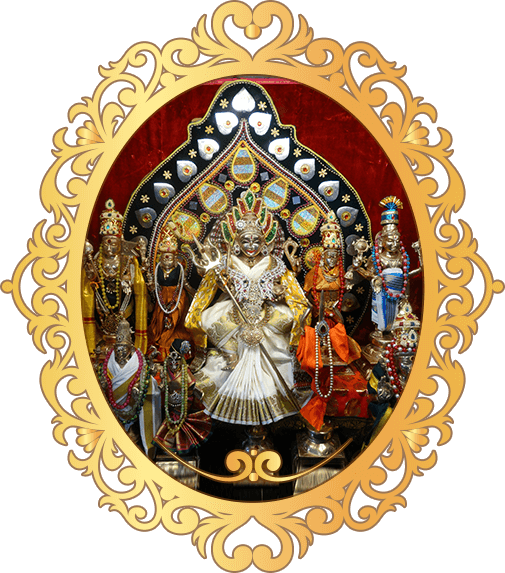Shrines in the Temple
Shri Muthu Mariamman
Shri Muthu Mariamman is a Tamil folk goddess, whose worship originated in Pre-Vedic times. She is the main Tamil mother goddess, predominant in the rural areas. The word Mari has a Sangam Tamil origin meaning "Rain" and the Tamil word Amman means "Mother". The ancient Tamils worshipped her as the bringer of rain and thus also the bringer of prosperity, since the abundance of their crops was dependent largely upon adequate rainfall.
The cult of the Mother Goddess is treated as an indication of a society, which venerated femininity. In the Sangam literature, there is an elaborate description of the rites performed by the Kurava priestess in the shrine Palamuthircholai.
The Goddess is very powerful and fulfils Devotees’ wishes. Devotees vary with different wishes, seeking wedding, child, job, health and solution for family problems etc. Persons affected by Chickenpox and Smallpox come to this place and pray the Goddess for speedy recovery.
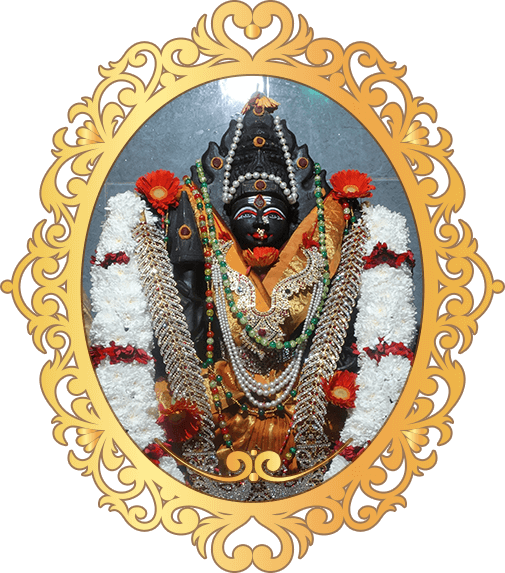
Lord Vinayakar
Lord Vinayakar is worshiped at the beginning of any new endeavour with a belief that he will hinder all obstacles in the path of success.
Lord Vinayakar is worshiped to attain the spiritual insight.
Lord Vinayakar is prayed to gain wisdom and intelligence. The elephant head of Vinayakar is the sign of intelligence.
Lord Vinayakar is worshiped to achieve splendour and prosperity in life.
Destroying pride, conquering emotions, and obliterating ego are the most essential steps should be taken by one to be a perfect person. Worshiping Lord Vinayakar will help to achieve the same.
Lord Vinayakar's Trunk represents Om the cosmic energy of the universe.
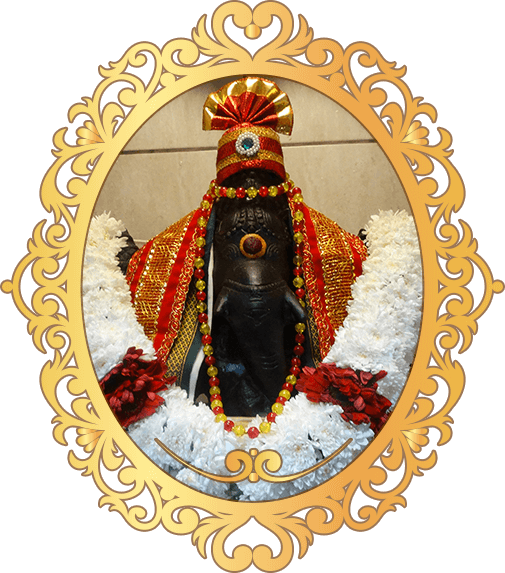
Lord Shiva
Shiva is the "destroyer of evil and the transformer" within the Trimurti, the Hindu trinity that includes Brahma and Vishnu. In Shaivism tradition, Shiva is the Supreme being who creates, protects and transforms the universe. In the goddess tradition of Hinduism called Shaktism, the goddess is described as supreme, yet Shiva is revered along with Vishnu and Brahma. A goddess is stated to be the energy and creative power (Shakti) of each, with Parvati the equal complementary partner of Shiva. He is one of the five equivalent deities in Panchayatana puja of the Smarta tradition of Hinduism.
According to the Shaivism sect, the highest form of Shiva is formless, limitless, transcendent and unchanging absolute Brahman, and the primal Atman (soul, self) of the universe. Shiva has many benevolent and fearsome depictions. In benevolent aspects, he is depicted as an omniscient Yogi who lives an ascetic life on Mount Kailash as well as a householder with wife Parvati and his two children, Ganesha and Kartikeya. In his fierce aspects, he is often depicted slaying demons. Shiva is also known as Adiyogi Shiva, regarded as the patron god of yoga, meditation and arts.
The iconographical attributes of Shiva are the serpent around his neck, the adorning crescentmoon, the holy river Ganga flowing from his matted hair, the third eye on his forehead, the trishula as his weapon and the damaru. He is usually worshipped in the aniconic form of Lingam. Shiva is a pan-Hindu deity, revered widely by Hindus, in India, Nepal and Sri Lanka.
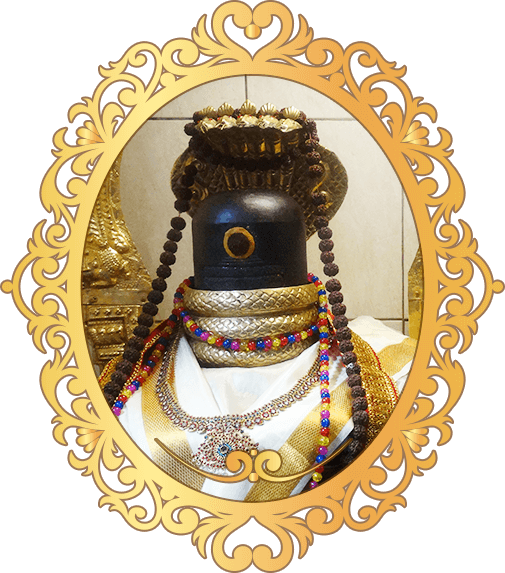
Lord Murugan with Deivanai & Valli
Lord Murugan is the son of Lord Shiva and Goddess Parvathi.
Lord Murugan has all the qualities of His parents (His 5 faces represent that of Shiva and 6th face is of Goddess Parvathi as Shakthi).
When you are praying to Lord Murugan, indirectly you are praying to Shiva and Parvathi too.
We have seven Chakras, the energy centres within us. The energy surges through the 6 Chakras and stabilizes at the 6th Chakra, the Ajna Chakra (the area present in the middle of our 2 eyebrows), it blossoms as Lord Murugan, the symbolizm of Guru Tattva.
Shiva is the un-manifest Divinity, while Lord Murugan is the manifest divinity. Murugan is the symbol of Kundalini Shakthi. By praying to Murugan, we are praying to the Kundalini energy within us and thus activating it.
Lord Murugan helps us in destroying of harmful and evil nature within us, and thus conquering of sensual desires.
Lord Murugan is a great warrior and often referred as God of war, since he himself is commander of the army of God's. Praying to him, we too become strong and victorious in all our tasks.

Lord Shri Sandikeswari
Devi Sandikeswari - The protector from all evils, is a popular feminine deity predominantly worshiped by Tamils. The Goddess is basically a fierce village deity associated with Goddess Parvati and is said to be propitiated with blood. She also serves as a rural guardian deity, revered in the villages. The Goddess is also the Avatar of the supreme power called ‘Shakti’ which forms the genesis of the Universe.
It is often believed that those who pray to Goddess Sandikeswari will face obstacles initially but over a period, these obstacles will go away just like snow under the heat of the Sun. Devi Sandikeswari will teach you how to develop patience. Devi Sandikeswari is a strict mother who knows nothing but love for her children.
Tuesdays are considered as auspicious for paying obeisance to Devi Sandikeswari. Those who pray to her on Tuesdays are assured of freedom from obstacles.
Lemon and Devi Sandikeswari have a tremendous connection. This is a practice that is being adopted among Tamils from time immemorial. Lemon absorbs all the negative energy. There are people, who are cursed or who are victims of bad influences and as a result face lots of difficulties in their lives. By lighting a lemon lamp or by at least offering a lemon to the Goddess, all these negative energies are completely decimated.

Lord Bhairavar
The origin of Bhairava can be traced to a conversation between Brahma and Vishnu, which is recounted in the Shiva Mahapuranam. In it, Vishnu inquired of Brahma, "Who is the supreme creator of the Universe?" Arrogantly, Brahma told Vishnu to worship him as Supreme Creator. One day, Brahma thought, "I have five heads. Shiva also has five heads. I can do everything that Shiva does and therefore I am Shiva." Brahma became a little egotistical as a result of this. Additionally, he began to forge the work of Shiva and also started interfering in what Shiva was supposed to be doing. Consequently, Mahadeva(Shiva) threw a small nail from his finger which assumed the form of Kala Bhairava and casually went to cut off one of Brahma's heads. The skull (Kapala) of Brahma is held in the hands of Kala Bhairava, Brahma’s ego was destroyed and he became enlightened. From then on, he became useful to himself and to the world, and deeply grateful to Shiva. In the form of the Kala Bhairava, Shiva is said to be guarding each of these Shaktipeeths. Each Shaktipeeth temple is accompanied by a templededicated to Bhairava.
There is another school of thought, which says that Shiva himself created Bhairava. There was one demon by name Dahurāsuraṇ who got a boon that only a woman could kill him. Kali was invoked by Parvati to kill him. The wrath of Kali killed the demon. After killing the demon, her wrath metamorphosed as a child. Kali fed the child with her milk. Shiva made both Kali and the child to merge with him. From this merged form of Shiva, Bhairava appeared in his eight forms (Aṣṭāṅga Bhairavas). Since Shiva thus created Bhairava, he is said to be one of the sons of Shiva.
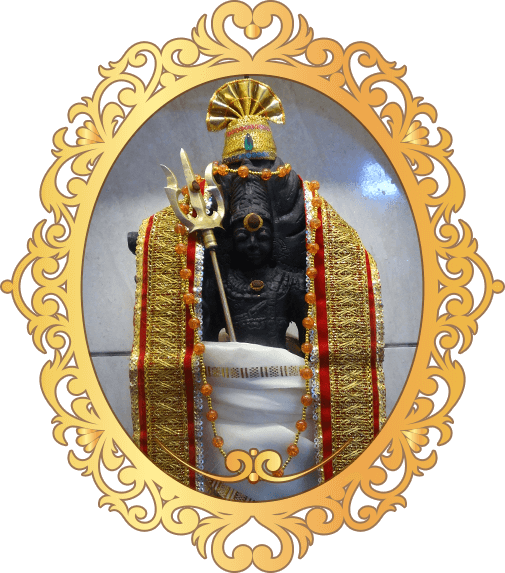
Vasantha Mandapam
Consists of sculptures of all the Lords present in the Temple in a decorative way.
